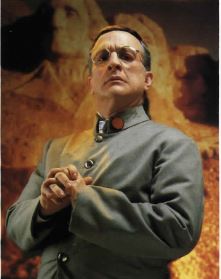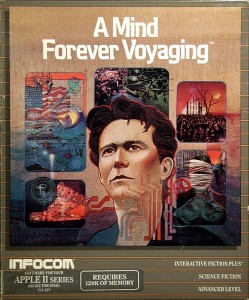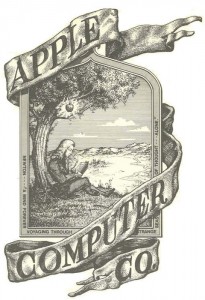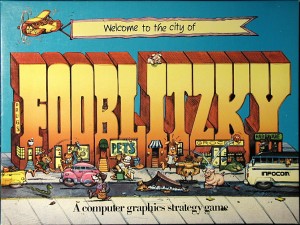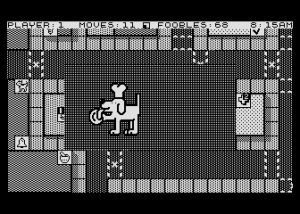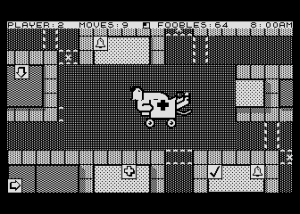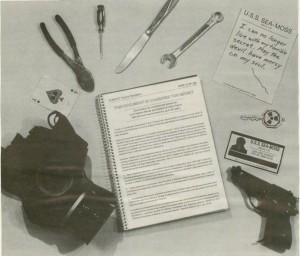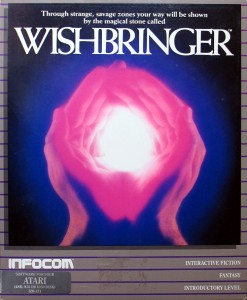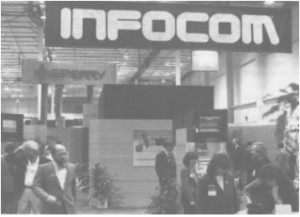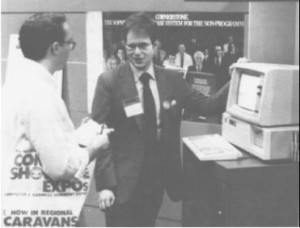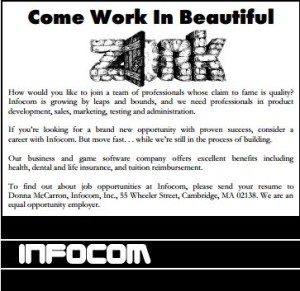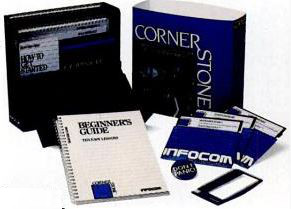Our theme song for today is the inevitable.
During the mid-1980s American liberalism was arguably at its lowest ebb of the century. This was the era of Ronald Reagan’s “Morning in America,” when liberalism was viewed as the cause of the economic doldrums of the previous decade and the social unrest of the decade before that, when the de facto voice of the Democratic party for many people was still Jimmy Carter’s handwringing “malaise” speech. While Carter told the people that they needed to fundamentally change their ways of life, to carpool and conserve energy, Ronald Reagan told them the country’s only problem was that they weren’t being American enough. After a somewhat rocky first few years in office, by 1984 the economy was booming as it hadn’t in almost two decades, and Reagan soared to reelection that year. Oddly for an ideology so rooted in tradition and fixated on a mythical America of the past, conservatism felt fresh and vigorous and new, like the future, as the “Greed is Good!” 1980s got rolling at last in earnest. To stand in opposition to Reaganomics was to blow into the face of a hurricane; even counterculture icons like Neil Young were making noises about supporting Reagan. Yet it was at this moment, before the Iran-Contra scandal began to at least reopen a window for debate in the American body politic, that Steve Meretzky penned A Mind Forever Voyaging. Whatever else you can say about it, it was one hell of a brave piece of work.
Meretzky’s stand-in for Reagan — with a bit of Joseph McCarthy thrown in for good measure — is a charismatic senator named Richard Ryder (subtle Meretzky ain’t). It’s 2031, and the United States of North America is once again gripped by economic malaise. Ryder is promoting something called The Plan for Renewed National Purpose to fix all that. I might complain that the name is rather too fascistic-sounding, except that I’m not really sure it sounds any more ominous than The Patriot Act. I might complain that the specifics of the Plan hew a bit too closely to the Republican agenda of 1985, except that the Republican agenda of 1985 is largely still the Republican agenda of today. So why not 2031 as well?
* cut tax rates by fifty percent
* vigorous prosecution of tax evasion
* decentralization of federal responsibilities
* deregulation of all major industries
* reinstatement of the military draft
* emphasis on fundamentals and traditional values in education
* mandatory conscription for troublemakers and criminals
* a strict "USNA First" trade policy
* termination of aid to nations not pro-USNA
* cutbacks on all types of bureaucracy, e.g. registering cars, guns
* termination of government subsidies to outmoded industries
A Mind Forever Voyaging‘s criticism of these policies and the mindset that spawned them will grow increasingly strident, as befits a muckraking work meant to shake the people and get them to wake up! But the criticism builds slowly. When we first enter the future Rockvil, in 2041, it seems a pretty nice place.
As Jason Scott noted in his comment to my previous article, Rockvil itself is a major achievement not just for its sheer size but also, more so, for what a believable place it is. Rockvil is a prosperous mid-sized town perhaps about the size and character of a real-world place I once lived, Olympia, Washington. It’s laid out in a way that just feels intuitively right. There’s a tourist district in the north with a zoo, a sports stadium, parkland, concert halls and theaters; a bustling downtown at the city’s center, with residences for city-dwelling hipsters (Perry Simm among them) along its edges; a university in the west surrounded by the expected student hangouts like a bar and a cheap Chinese joint; the obligatory shopping mall and cineplex to the east. Traveling south takes one across “the proverbial railroad tracks” — every city has them — to the less photogenic parts of town: the power station, the skycar factory (“the last surviving smokestack industry in the area”), the city dump, liquor stores and laundromats and gun shops and tenements and reminders of a more industrial past in the form of shuttered factories and warehouses. Surrounding the whole, but beyond “the boundary of this simulation,” are the suburbs.
We spend the majority of the game wandering about Rockvil, and we come to care for the place almost as if we really had grown up there. In 2041 it’s largely a happy, welcoming place for a (presumably) successful young writer like Perry, with just a few ominous signs, if you’re inclined to view them as such, like the growing underclass on the other side of the tracks and the population of Rockvil Reformatory: “From what you’ve heard, the prison is overcrowded, because today’s stricter law enforcement and mandatory sentencing regulations are putting people into the penal system even faster than the military draft can remove them.” The city’s slow decline is horrifying, as the place becomes a nightmare version of itself like Festeron in Wishbringer but without a trace of that game’s whimsy. (It’s funny to think that Infocom released two games back to back that relied on such a similar mechanic, another of a number of odd confluences in their history.) A weird cult-like religion rises and finally takes over the government; infrastructure crumbles and publicly-funded museums close or fall into horrid neglect; the criminals and police both get ever more brutal; the films showing at the local cineplex get baser and uglier, as does the graffiti on the streets; racism becomes institutionalized and celebrated; the credit card in your wallet is replaced with a ration card. There’s much here that’s disturbing and/or heartrending, like the “monkey torturing” that becomes the zoo’s main draw or the eventual use to which the stadium is put: “Execution Matches.” The last version of Rockvil, from 2081, is an apparent post-nuclear wasteland inhabited by roving bands of possibly mutated, certainly cannibalistic savages. We don’t last long there.
There’s a message to this progression that’s as relevant now as it was in 1985: what seems expedient in the short term can be profoundly destructive in the long term. And, without putting too fine a point on it, I can’t help but note a certain extra layer of ominous prescience for those of us playing the game thirty years after it was written. Many of the government’s worst abuses are initially justified in the name of preventing terrorism. The apartment Perry shares with his wife and son is subject to unannounced raids by the “Border Security Force” — Homeland Security, anyone? — even in 2041. A sign in the airport soon reads, “All international travellers must pass through strip-search. No exceptions!”
The apartment is a special nexus of interest in each version of Rockvil. While Perry gets a lengthy backstory in the game’s manual, his wife Jill and son Mitchell are the only people we meet with whom he has a personal relationship. Not that we learn much about either in the bare handful of substantial paragraphs that relate to Perry’s home life: Mitchell is just an average little boy; Jill is a painter who is addicted to trashy romance novels and madly loved by and in love with Perry (perhaps relevantly, Meretzky himself got married just after finishing A Mind Forever Voyaging). But it’s enough to make their final appearance in 2071 the most harrowing scene in the game:
Six or eight heavily armed Church police storm into the apartment. You see a look of horror come over Jill, as she covers her mouth with the back of her hand, as though stifling some silent scream. You follow her gaze, and -- a shock of recognition -- sauntering in behind the police...
The ten years since you last saw him have left scant change on the face of your son. "Mitchell!" you yell, and take a step toward him, but a blow from one of the cops sends your frail, old body flying against the wall.
"She is the one." The voice is Mitchell's, but the tone is cold, unrecognizable, sending shivers through you. He raises a fur-clad arm, pointing at his mother without a hint of emotion. "She spake against the Church; she tried to poison the mind of a child too young to know the Truth." The thugs grab Jill, who reaches toward Mitchell, tears of terror streaming down her face. Totally unresponsive, he turns and walks calmly out of the apartment.
As Jill is dragged, screaming and crying, through the front door, you try to follow, but a cop pummels you in the stomach with his club. You fall to the floor, retching, as the apartment door slams closed, shutting you off forever from the son you cannot understand and the wife you will never see again.
Now, one could argue with some justification that this is rather emotionally manipulative, that the game hasn’t characterized anyone involved well enough to really earn our pathos. But like Floyd’s death, it’s unforgettable and affecting in spite of it all — more so, really, because it fits in so well with the tone of the game around it rather than coming out of nowhere as an aberration in the middle of a science-fiction comedy.
There’s a lot to quibble about in Rockvil. As believable as the city in general is, the writing is sometimes frustratingly perfunctory. Meretzky has a tendency to just tell us what something is in the manner of a tourist guidebook or government brochure rather than give a real physical sense of place. So, we learn that “Rockvil Municipal Stadium is a multipurpose sporting event facility, home of both baseball’s Rockvil Bobcats and soccer’s Rockvil Rockets.” Okay, but what’s it like there? Where am I standing inside? What do I see and smell and hear and feel? This mode of description gets particularly confusing as we go deeper into the future. The game always acts as if Perry knows this place intimately. Yet the whole ostensible purpose of visiting these future Rockvils is to find out what the (simulated) future holds. If I have full access already to the simulated memories of the Perry of the future, why do I need to go there to access them? But here we’re getting into the more problematic if also philosophically interesting parts of the game, which I’m going to reserve for the next article…
I also wish the implementation was less sketchy. There are lots of interesting little Easter eggs, but they’re hard to find because most of the time the game doesn’t much reward actions other than just wandering around and reading the room descriptions. And even when you do stumble upon them they sometimes leave you wanting more. When I played the game before writing these articles, I found in 2041 a delightful little book store where I bought The Wizard of Oz, a favorite from Perry’s childhood. Given the tradition of bookstores in dystopian literature as seats of resistance and beacons of freedom, I went back there in every later time: to see how it had changed, to see how the “kindly” proprietor was doing, to hopefully buy more books that would tell me more about Perry’s state of mind amidst the societal decline. But there was nothing new to see or do, until the place was closed completely and that was that. I of course understand that many of these complaints can be laid directly at the feet of technical limitations. Still, I can’t help but think about how A Mind Forever Voyaging could be even better with better writing and a deeper world to explore.
The other obvious complaint to make is thematic: that A Mind Forever Voyaging isn’t exactly the fairest of political critiques. At risk of sounding too inflammatory, I will say that the game puts its finger on a certain authoritarian impulse that strikes me as a bothersome undercurrent to so much Republican political thought. But still, the game’s message that we’re all going to wind up food for roving cannibalistic mutants if we vote Republican is a bit farther than I’m willing to go. In the last act of the game we meet Richard Ryder himself at last. Consistent with Meretzky’s view of Reagan as an “asshole,” he’s content to just make Ryder a mustache-twirling villain, guilty not only of bad policy but of fundamentally bad faith. There’s literally no division in the game’s universe between a Reagan Republican and a full-blown fascist.
"Now let's get a few ground rules straight, Perelman. Nothing is stopping the Plan. Even if I didn't think your damn tapes were faked, I wouldn't give a damn. A helluva lot of people have a helluva lot at stake in this thing, and so what if a lot of creeps who can't take care of themselves get a little hurt." "I'm very frightened, Senator," says Perelman, his voice laced with sarcasm. "Shut up," Ryder shouts back. "I said that I'm doing the talking here!
"And let me tell you another thing, Perelman. Don't think that just because you've been on the news and been a big hot shot around here, you're gonna get some special consideration, because all that doesn't mean diddly-squat in the kind of power circles I'm talking about!"
Ryder is getting really worked up; his normal, fatherly demeanor is completely gone. "Perelman, you're an even bigger idiot than I imagined if you think we'd let some two-bit egghead scientist and some high-tech whiz bang computer stand in our way! Remember this -- if you were to have some unforeseen accident, you wouldn't be the first person who's gotten crushed by standing in the way of the Plan!" Perelman, with a quick glance in your direction, says, "Quite an oration, Senator. Vintage thug. I wish I could save it for posterity. Would you be willing to go on the record with that statement?" Ryder becomes even more livid. "A real jokester, huh? Lemme tell you this, Perelman -- you'd better stop joking and start listening to my advice, or you're not going to be around to care about posterity, understand?
"So, here's the bottom line, Perelman. My men are going to stay here and keep the lid shut tight on you troublemakers, until the Plan is the law of this land. Nobody leaves, no communications at all, and don't worry about visitors; we'll take care of that. And if I get any trouble out of you, I swear to God I'll personally pull the plug on that goddam wonder machine of yours. Got it?" He stomps out without waiting for a reply, leaving Perelman sputtering in anger. A few seconds later, National Guardsmen enter and escort Perelman away.
Again, and while righteous anger certainly has a power of its own, I sometimes wish A Mind Forever Voyaging had a little more nuance about it.
After we prevent Ryder from pulling PRISM’s plug and thwart his Plan, a sequence which contains the only significant puzzles in the game, we come to the lengthy and justifiably oft-remarked epilogue in a Rockvil of the 2091 of a different timeline, a veritable liberal utopia.
The headline story is about a newly released study which indicates that the average life expectancy for both sexes has now passed one hundred years, and success in the development of regeneratives should send that figure even higher. Despite the dropping mortality rate, global population remains stable at just under two billion, with offworlding now running at a staggering seven million people annually.
To celebrate next month's special twentieth anniversary Disarmament Day, the World Council has passed a bill authorizing fireworks displays in each of the former capital cities of the twenty-two former nuclear powers. The fireworks displays, by Aerialist designer Jean M'gomo, will feature disarmament themes, and will be the largest display of pyrotechnic art in this century.
A story on an inside page catches your eye: "Perry Simm, Noted Author, To Join Crew of Silver Dove," reads the headline. "Perry Simm, author and poet, recipient of the 2089 Mexicana Prize, has been selected from nearly a thousand applicants to be the resident author aboard the Silver Dove, the space colony that is currently being equipped for mankind's first interstellar journey, a trip expected to last a dozen generations."
The epilogue, of which the above newspaper is only a modest part, goes on to show Perry reunited with a healthy and happy Jill and with a clean, prosperous, and peaceful Rockvil in which everyone has excellent health care, access to higher education, support when they need it, and freedom to do and be whatever they wish. And you know what? Having lived for almost five years now in two of the three happiest countries in the world, I have to say that that’s just a better way to run a country. Oh, sure, the epilogue is over the top, so much so that it’s almost hard to take entirely at face value. Yet Meretzky clearly, profoundly cares. In this era of irony and antiheroes and cool detachment, the gawky sentimentality of A Mind Forever Voyaging‘s epilogue comes across as brave and inspiring and kind of beautiful. Really, what is so funny about peace, love, and understanding?
Infocom saw A Mind Forever Voyaging as likely to prompt discussion and controversy, just as a similarly strident book-borne critique of Reaganomics would. Far from running from it, they positively courted such a response, a remarkable fact indeed when one considers that they were still desperately trying to sell Cornerstone to a corporate America who thought Reagan was pretty great. The back of the package announced A Mind Forever Voyaging as a “major departure for Infocom,” and the game was announced at a press conference held at the New York Public Library to emphasize its literary qualities. In light of all this, the game’s reception was perhaps the most dismaying possible: nobody seemed to have much of anything substantive to say about it. Astonishingly given how unsubtle it is, many or most reviewers didn’t realize the political critique existed at all — or, if they did, knew better (or their editors did) than to touch on it even in passing. A Mind Forever Voyaging attracted none of the buzz of Chris Crawford’s contemporaneous Balance of Power. The mainstream press was moving on from bookware and with it moving on from Infocom, and everyone inside the industry took it as just another adventure game, albeit one with a weird shortage of puzzles. Sales amounted to no more than 30,000 or so, making A Mind Forever Voyaging Infocom’s least successful game to date (excepting the oddball Fooblitzky). Infocom took this as a rejection of the whole idea of puzzleless interactive fiction, even though their final game of 1985, the much more traditional Spellbreaker, wouldn’t sell much better despite being available on many more platforms. Neither Meretzky nor Infocom would ever attempt anything quite like A Mind Forever Voyaging again.
We, however, aren’t yet done with the game. There’s a whole additional set of ideas here which are if anything even more interesting than the more straightforward political allegory. We’ll get to them next time.
